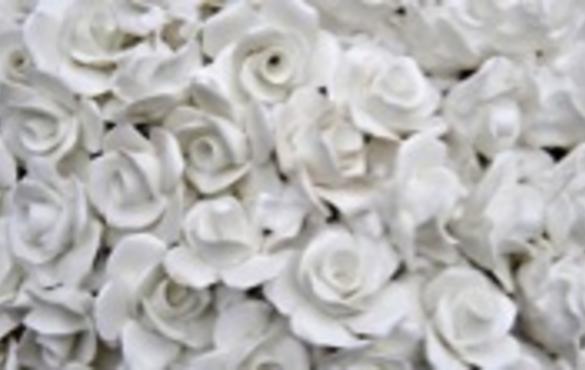- Home
- Visit us
- What's on
- Artists
- Learning
- Join us
194000
The Original Spode Factory Site
This exhibition proposal for BCB 2015 has grown out of a WW1 research project that ceramic artist Steve Dixon in collaboration with film maker/photographer Johnny Magee were commissioned to undertake by the Staffordshire Great War Museum Consortium.
194000 will be a Stoke-on-Trent WW1 100th anniversary memorial to the men of the North Staffordshire Regiment who went to war 1914-18.The exhibition concept is based on a re-read of Private J.T. Humpherson’s (8th North Staffs Regiment 1914-18) 1973 testimony that is held in the collection archives of the Potteries Museum and Art Gallery.
Recruited in Stoke, Humpherson talks of joining up at the call of Major Cecil Wedgwood (mayor of Stoke 1914), of training and sleeping under canvas (sometimes blown away) and his dismay at having to march by foot all the way from Le Havre to the front at Bethune, a distance of 194 miles. (194 miles = 194,000 paces. The word mile comes from the Latin word mille, which means 1000, as the original mile was defined as 1000 paces of a Roman Legion.)
The work will take the form of a monolithic scaffolding structure (evoking industry, manufacture and a ‘brutal’ aesthetic) with the proportions of a cinematic wide screen (frontal view) with its scale determined by the estimated coverage of a specified number of ceramic flowers, a vertical field of flowers.
The field will incorporate newly commissioned 5,608 white bone china flowers, representing the number of men from the North Staffordshire Regiment who fell in World War 1. A heavy white tarpaulin will be suspended from the front of this structure, and a vertical field of flowers created by pushing the flowers through the fabric. The fabric will be reinforced by a fine line of stitching in a grid format – warp in red, weft in blue. (WW1 trench maps use blue for British lines, red for German lines.) The flowers will be ‘tagged’ at the back, which will be clearly visible through the supporting scaffolding structure behind. The tags will serve as personal memory markers and dedicating individual flowers to individuals, veterans, significant people, and family members.
Tags and flowers will be added to the main structure gradually throughout the festival period by schoolchildren and members of the public, and “purchasers” of individual flowers. “Forget-me-nots” will be used as one of the main flower types, universally recognised as a symbol of remembrance through love and respect.
The structure acts as both monumental (but minimal) sculpture and projection screen for a film work. The film will be focus on a swelling seascape (the English Channel) with an accompanying evocative soundtrack.
This project will incorporate community engagement, working with the education sector and artists to explore contemporary applications for Stoke’s long heritage of flower making. Young people from Stoke-on-Trent and Staffordshire will explore the history of ceramic flower making within the Staffordshire Potteries, making the connection between ceramic industry and the Spode archived material related to the involvement of women workers during WW1. Participants will gain new heritage skills in making bone china flowers under instruction of one of Stoke-on-Trent's remaining talented flower makers, and will make flowers contributing to an exhibition display at the British Ceramics Biennial Festival in 2015. A WW1 Ceramics Resource Pack will be created and will be available as a downloadable resource and an online clay flower making tutorial video will be created to enable this local accessible traditional skill to be shared with a wider audience to preserve this ceramics process.
The flowers will all be made available for sale, throughout the biennial, from the gallery shop, and online.









